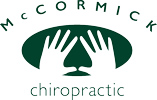
Temporomandibular Joint Disorder, also abbreviated to TMD or TMJ, is the name for a variety of conditions that affect the jaw joint. Symptoms vary from case to case, as does the severity of the symptoms. Most people who suffer pain in the jaw muscles or joints experience only temporary or cyclical problems. Other people go on to develop chronic symptoms and are diagnosed as having TMD.
Signs of TMD may include:
- Radiating pain in your face, neck, or shoulders
- Limited movement or locking of your jaw
- Difficulty opening your mouth wide
- Pain when you chew or yawn
- Painful and/or loud clicking or grating when you open or close your mouth
- Pain or soreness in front of your ear, or in your jaw muscle, cheek, teeth, or temples
- A noticeable change in the way your upper and lower teeth fit together
- Headaches, earaches, dizziness, difficulties hearing or swallowing
If you have any of the above problems, your doctor of chiropractic can help identify whether TMD is responsible and offer appropriate conservative treatment if necessary.
Causes of TMD
TMD experts categorize the condition in three ways:
- Myofascial pain that affects the jaw, neck, and shoulders. (Myofascial refers to the muscles, not the face)
- Dislocation of the jaw or displacement of a disc
- Degenerative joint disease, meaning rheumatoid arthritis or osteoarthritis in the jaw joint
A physical insult to the jaw is a major cause of TMD. This may be in the form of a knock while playing sport, a punch, or simply through overuse syndromes such as excessive gum-chewing, or significantly favoring one side of the mouth over the other when chewing.
Extended periods of physical stress can also lead to TMD. For example, sitting in a dentist’s chair with your mouth wide open for hours, although most dentists are aware of this problem and schedule breaks for the patient, or screen them prior to treatment for any jaw joint issues. If there is a problem, appropriate physical therapy may be required after treatment, or the patient may be asked to prepare before treatment with a series of jaw-loosening exercises.
Emotional stress can also contribute to TMD, although it is not in itself a cause. When a person is stressed and reacts physically through repeated teeth clenching or grinding, especially when this happens unconsciously at night, TMD may develop if the stress continues to produce these physical effects for any length of time.
Certain conditions that used to be labeled as causes of TMD are now referred to as just triggers. This includes moderate gum chewing, jaw clicking that causes no pain, orthodontic treatment that does not involve excessive opening of the mouth, and upper and lower jaws that have never fitted together properly.
Women are four times more likely to experience TMD than men, which may be down to postural differences, exacerbated by high heels.
Diagnosis and Treatment of TMD
If your doctor of chiropractic is required to assess TMD as a possible cause of your symptoms, you may be asked to do several things: place three fingers vertically in your mouth and bite down, open and close your mouth, and chew repeatedly. The chiropractor will check your jaw joint and muscle balance as your do these exercises and this is usually sufficient to confirm or rule out TMD. You will also be checked for any signs of inflammation and abnormalities. If further investigation is required to confirm diagnosis, an x-ray or MRI may be ordered.
If it is TMD, you may require chiropractic manipulation and massage, the application of heat and ice, and special exercises, with the primary aim of alleviating any pain. You may also be referred to a dentist or orthodontist if any appliances or splints are required to reduce the causes of the TMD.
Further chiropractic advice for dealing with TMD:
- Heat and ice. An ice pack isrecommended shortly after the injury or onset of pain. Later on, heat will help promote healing and reduce discomfort.
- Certain joint movements need to be avoided, such as chewing on hard foods, or eating food that causes the mouth to open too wide.
- TMD-specific stretching or strengthening exercises may be prescribed according to the specific case, and special feedback sensors in the jaw may need to be retrained.
For Your Health,
Dr. Leo McCormick, Dr. Darryl Hajduczek, and Dr. Leslie Freeman
